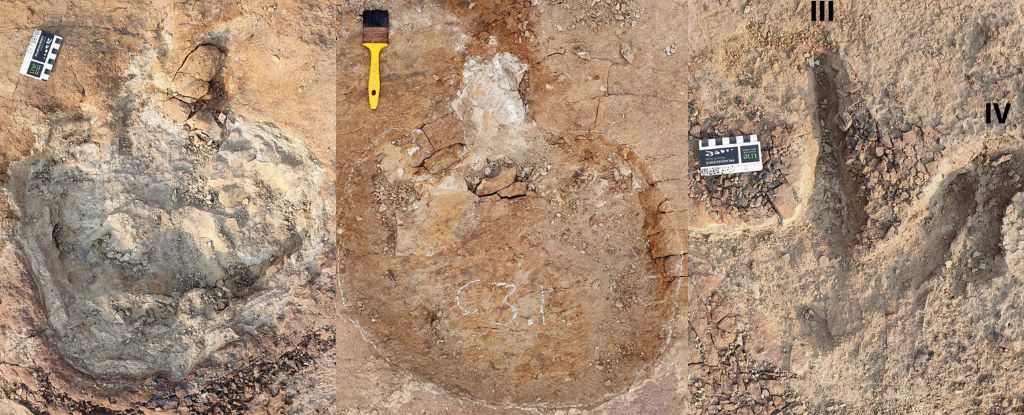
A remarkable discovery at Dinosaur Provincial Park in Canada has unveiled a series of dinosaur footprints that suggest herbivorous species may have coexisted and even traveled together. These trackways, preserved in ironstone and dating back approximately 76 million years, provide new insights into the social behavior of these ancient creatures.
The international team of paleontologists, led by researchers from renowned institutions, uncovered this unprecedented set of tracks, marking the first significant find of its kind in the region. Notably, the footprints of at least five ceratopsian dinosaurs were found alongside those of an ankylosaurid, indicating potential multi-species herding behavior.
Significance of the Findings
Paleontologist Jack Lovegrove from the Natural History Museum in London commented on the implications of the discovery. “Ceratopsians have long been suspected to have lived in herds due to the existence of bone beds which preserve multiple individuals of the same species together,” he explained. “However, these bone beds only tell us for certain that these animals died together or that their bodies accumulated after death. The preserved trackways of several ceratopsians walking together in a group is rare evidence for these animals living together.”
The arrangement of the footprints suggests the dinosaurs were likely visiting a water source, possibly following an ancient river. This interpretation adds a fascinating layer to understanding their behavior and habitat preferences.
Alongside the herbivorous tracks, the researchers identified parallel sets of footprints belonging to predators, including two tyrannosaurs and another smaller, carnivorous dinosaur, possibly a therapod. This evidence points to the likelihood that these predators were observing the herd, heightening the dramatic narrative of life during the Cretaceous period.
Future Research Directions
Paleontologist Phil Bell from the University of New England in Australia noted the chilling implications of the predator tracks. “The tyrannosaur tracks give the sense that they were really eyeing up the herd, which is a pretty chilling thought, but we don’t know for certain whether they actually crossed paths,” he stated.
Despite the uncertainty regarding direct encounters between the species, this discovery could serve as a crucial stepping stone for further research. According to Lovegrove, the findings have enabled researchers to identify many more trackways within the park, creating opportunities for additional studies into how these diverse species cohabited and interacted.
This research was published in the esteemed journal PLOS One, highlighting its significance in the field of paleontology. As scientists continue to explore the rich fossil beds at Dinosaur Provincial Park, this groundbreaking evidence of multi-species interactions among dinosaurs promises to reshape our understanding of their social structures and behaviors.







